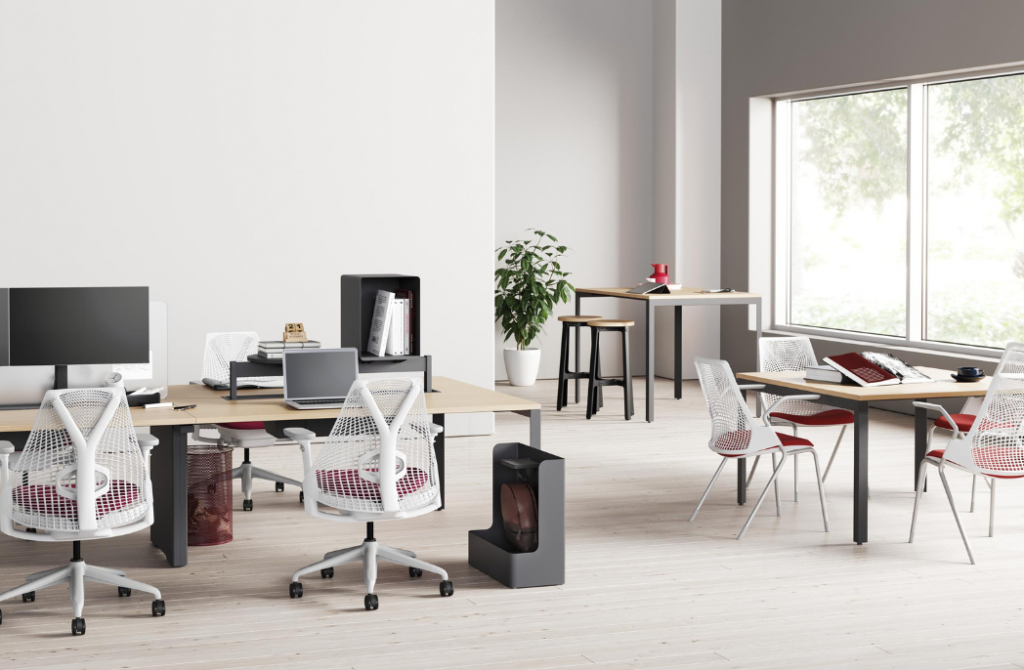
“Herman Miller workstations are at the forefront” – Sue Fenton
Share
With the release of Herman Miller’s configurable workstation, the Byne system, ADR speaks to Woods Bagot’s Sue Fenton to glean an industry perspective on the furniture company’s innovations in the workspace.
ADR: As an architect specifying workstations, what are the most important elements you are looking for?
Sue Fenton: I’m looking for the same fundamental features that we look for in any furniture, not just workstations. We’re looking for work settings that are utilising natural materials, have lots of options to suit different spatial concepts, and bring the research and development of the technical aspects needed – so making sure that the functionality is seamless and easy to use.
What’s interesting about Herman Miller is its history of working with designers of furniture. And so, for its design of work settings, it’s able to harvest from all that research. I think this makes it a unique offer.
Why do you think it’s important for specifiers to invest in premium workstations and what are the pitfalls of taking shortcuts?
This really does set the stage for discussing why Herman Miller is credited for fostering furniture design that is now collectible, innovative and iconic of its time. It has a background of producing furniture with a significant level of research and quality, and it is innovating in using ethically sourced materials.
This is critical in making a positive impact and preventing the furniture from ending up in landfill, which is probably the key.
But there are also important factors around the feeling that organisations are investing in their people, and providing a well-designed workplace, especially at the moment.

Why is the timing such a consideration?
More than ever before, organisations need to be able to figure out ways to bring their teams back into the office. The ergonomic factor is not something that we can all afford to have at home. Things like a sit-to-stand desk speak to that idea of placing people’s well-being at the centre of the conversation. And it’s now appearing to some degree in every workplace project. It offers choice and acknowledges diversity.
The team at Woods Bagot is sitting in a Herman Miller bench-style setting. One of the benefits of this is that there are no joints between the desks and where you sit. It’s a much more of an ebb and flow idea that allows you to expand or contract quite quickly.
It enables the landscape of the interior to be more complex and less repetitive. It’s offering people choices really.
And it provides more options than straightforward sit-to-stand desks, which take up a certain amount of real estate in the workspace?
Also, sitting all day is obviously not great, but standing all day is not great either. It’s about offering up choice, but spatially it’s also offering difference.
At Woods Bagot we’ve been using a modular Herman Miller workstation. As I said, it’s a bench style and we’ve been able to reconfigure it for different parts of the office, as our needs have changed.
The Byne system further tailors this to create a variety of work settings and different furniture landscapes, dispelling the idea of workstations being perceived as a uniform machine for productivity.
This also brings in issues of sustainability, diversity, inclusion, adaptability and versatility.

Looking to accelerate lead times and minimise its carbon footprint, Herman Miller has launched an Australian Localisation Program. Does that have an impact on the choices you make when specifying?
Yes, it does. And that is an industry- and client-led conversation, as much as architects and designers. What a localisation program really provides is the ability to reap all the benefits of the research and development of a global manufacturing company with a long-respected track record of investing in local manufacturing programs.
And our clients and project aspirations are more and more committed to local supply, and the reduced carbon footprint this entails. It’s something that is starting to be woven into every project.
So, it’s a market driven trend?
Yes, especially during the supply issues during lockdowns. There were quite a lot of projects that basically had to be respecified as a result of this.
Finally, what do you think is the most important factor to bear in mind when specifying for workspaces?
Investing in good furniture, whether it be a workstation or a loose furniture piece, is speaking to the whole sustainability and circular economy question as well. The fact that things can be recycled or collectible or modular so that they can be reassembled and taken back, is where Herman Miller is at the forefront.
For more information: Herman Miller or Byne system.




















